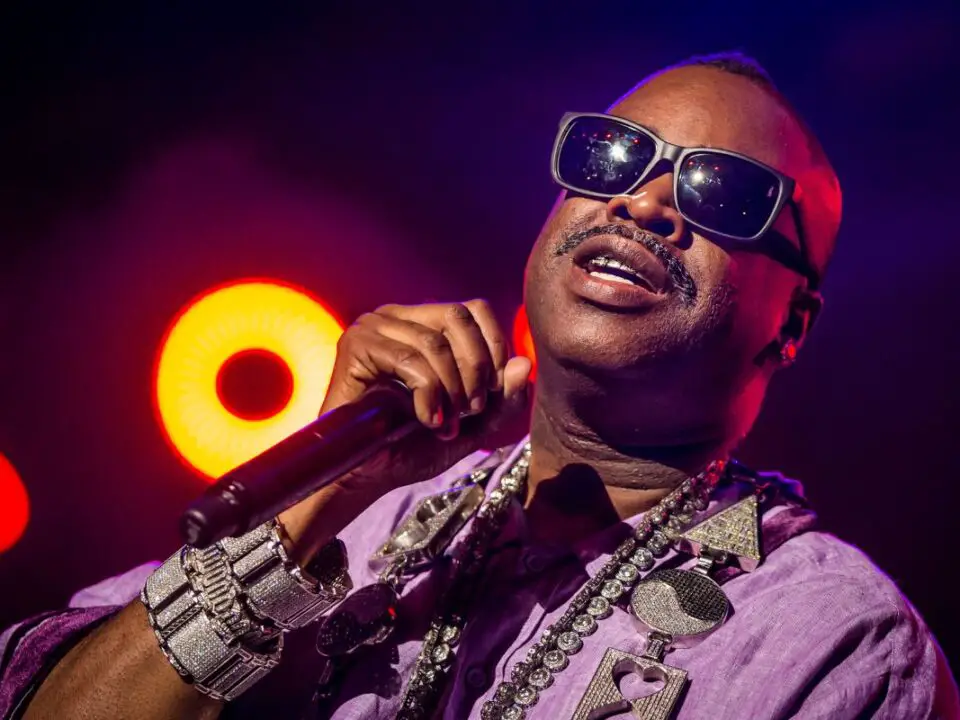While it’s a proven fact that the world looks at Hip-Hop for fashion choices, a must-have element for a rapper’s designer wardrobe is the jewelry he rocks.
Some with some age on them might call it “trunk,” but the most popular term came from a 16-year-old rapper from New Orleans named Lil Wayne, who in the early 2000s came up with the term “Bling Bling.”
In an exploration of the shiniest jew-els, CNN “Cuban-linked” up the history of bling for people to see how it went from small flimsy gold chains to platinum wonders and pieces of art.
Pioneering rapper Slick Rick talked about his motivation for rocking ice in the new book, “Ice Cold: A Hip-Hop Jewelry History,” by Vikki Tobak.
The Ruler said, “Big pieces are my thing. On stage, I want the concertgoers and supporters to see and feel my pieces from the farthest seat in the house.”
The first-time people started noticing trunk jewelry was with rappers like Slick Rick, Run DMC, Rakim, LL Cool J, and Bid Daddy Kane. By the time Nas hopped on the scene, he had made it a point to get the biggest and the flashiest collection to pay homage to some of the artists he looked up to as a kid.
He even said his infamous “QB chain” inspired other rappers in his generation to start rocking large chains in his song, “Meet Joe Black.”
But the Queensbridge lyrical architect might have been trumped by Ghostface from Staten Island.
Slick Rick said when he saw the WuTang Clansman’s Versace plate and a 6-pound solid gold eagle on his wrist, “I was up in the stands clapping approvingly.”
The book features several generations of bling wearers, including Migos, Nicki Minaj, Lil Jon, ASAP Rocky, and even introduces people to Jacob Arabo, aka Jake the Jeweler.
“The jewelry grew as Hip-Hop grew and changed,” the author shared in her interview with CNN. “That’s why I start the book talking about this bigger cultural significance and what was happening in New York specifically at that time — the height of the drug trade, the ’80s. All of that stuff really reflected in the jewelry, and you had to have a certain level of respect and protection if you were going to wear that stuff in the street.”
Tobak also shares, “Jewelry culture is very regional, from New York to LA to the South. I do think Atlanta, being the more recent kingdom, really kind of puts those Southern aesthetics into it — doing things a little bigger, a little flashier, a little more laid-back, if you will. But the jewelry is on a whole different level only because they’re coming up at a time when there’s so much to be done in jewelry.”
Of all the people she has interviewed, including Beyonce, she said Cam’ron has her favorite story.
“Cam’ron had a piece made by Rafaello & Co very early on, and it was the spinning globe piece, which is a very famous piece. It had a working motor and actually spun, and it was considered a very unique piece for the 2000s for using multicolored gems and being round and just being this very ostentatious piece,” Tobak said.
“I guess years later, Cam’ron got a little bored of it and was going to trade it back in for something. A lot of times the jeweler would deconstruct a piece like that, which is crazy to me, but they would take all the gemstones out, they would melt down the gold and make something else,” she said.
“Lil Yachty got word that Cam’ron was getting rid of this piece, and it had been such an influential piece for him — he’s such a significant collector as well — and he came to the rescue and said: ‘Oh, my God, you can’t get rid of that piece. You can’t melt it down. I want it.’
“So he bought it and then he changed it to say, ‘Yachty’s World.’ Yeah. So, that piece was rescued and lived on, and it takes on this whole new generational meaning. I love that story,” she said.
Vikki Tobak’s “Ice Cold: A Hip-Hop Jewelry History,” published by Taschen, is now available.
